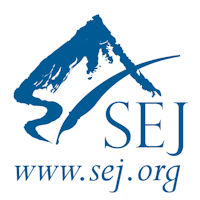 The Society of Environmental Journalists was founded in 1990 by a small group of award-winning journalists, including reporters, editors and producers working for The Philadelphia Inquirer, USA Today, Turner Broadcasting, Minnesota Public Radio and National Geographic. Today, SEJ's membership includes more than 1,500 journalists and academics working in every type of news media in the United States, Canada, Mexico and 43 other countries.
The Society of Environmental Journalists was founded in 1990 by a small group of award-winning journalists, including reporters, editors and producers working for The Philadelphia Inquirer, USA Today, Turner Broadcasting, Minnesota Public Radio and National Geographic. Today, SEJ's membership includes more than 1,500 journalists and academics working in every type of news media in the United States, Canada, Mexico and 43 other countries.
SEJ's reputation for excellence, service, and integrity has been built upon annual conferences hosted by distinguished universities, scores of regional events, unique publications, on-line services, in-the-newsroom training sessions and an extensive membership network.
As a 501(c)3 non-profit educational organization, SEJ provides educational opportunities and vital support to journalists of all media who face the challenging responsibility of covering complex environmental issues.
Lobbyists and public relations professionals are not eligible for membership in SEJ. All are welcome to subscribe to SEJournal and participate in SEJ's annual conferences.
"Objectivity as Independence: Creating the Society of Environmental Journalists, 1989-1997," by John Palen, provides an in-depth look at SEJ's creation and the philosophy of its founders. His paper was presented at the national convention of the Association for Education in Journalism and Mass Communications in Baltimore, MD, in August 1998.













 Advertisement
Advertisement 



